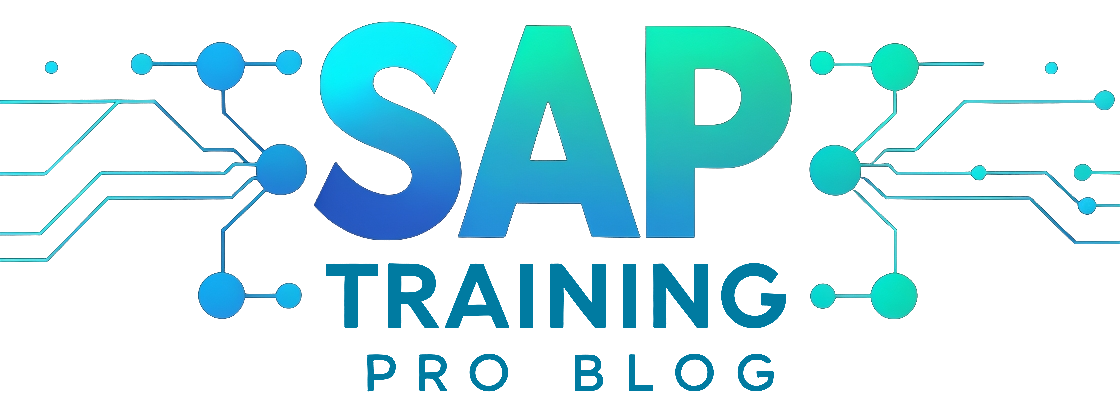SAP ABAP module: Unlocking the Power of SAP ABAP Module

The SAP ABAP module is a powerful tool that can greatly enhance the functionality of SAP systems. It allows for the customization and extension of existing SAP applications, providing organizations with the flexibility to tailor their systems to meet specific business needs. By unlocking the power of the SAP ABAP module, businesses can optimize their operations and streamline processes, ultimately leading to increased efficiency and productivity.
Table Of Content
- Introduction to SAP ABAP Module
- ABAP Development Tools
- ABAP Programming Language
- ABAP Objects and Object-Oriented Programming
- Encapsulation and Inheritance
- Polymorphism and Interfaces
- Enhancements and Modifications
- Integration with Other SAP Modules
- ABAP Integration Technologies
- Web Services and SAP ABAP
- Advanced Topics in SAP ABAP
With the SAP ABAP module, organizations can go beyond the standard functionalities offered by SAP and create unique solutions that cater to their specific requirements. This module enables developers to write ABAP code to perform various tasks and manipulate SAP data, giving them the ability to create custom reports, enhance user interfaces, and integrate external systems seamlessly. Furthermore, the ABAP module supports object-oriented programming, allowing for modular and reusable code development, which simplifies maintenance and promotes code efficiency.
Introduction to SAP ABAP Module
The SAP ABAP module is a powerful tool that enhances the functionality of SAP systems. It is designed to customize and extend existing SAP applications, allowing businesses to tailor their SAP environment to meet specific requirements. By leveraging the capabilities of ABAP, organizations can optimize their SAP systems and streamline their business processes.
The SAP ABAP module plays a crucial role in the larger SAP ecosystem. It serves as the backbone of SAP development, enabling developers to create and modify ABAP programs that interact with SAP data. ABAP stands for Advanced Business Application Programming, and it is a high-level programming language used for SAP development.
One of the key features of the ABAP module is its ability to integrate with other SAP modules. This integration allows for seamless data exchange and process integration between different modules, such as SAP FI/CO, SAP SD, and SAP MM. ABAP also supports various integration technologies, such as Remote Function Calls (RFC), BAPIs, and IDocs, which facilitate communication between SAP systems and external applications.
Using ABAP for SAP development offers several benefits. It provides developers with a robust set of development tools, such as the ABAP Workbench, ABAP Development Tools for Eclipse (ADT), and SAP HANA Studio. These tools streamline the development process and enable developers to create, test, and deploy ABAP programs efficiently.
Furthermore, ABAP supports object-oriented programming (OOP) concepts through ABAP Objects. This allows for modular and reusable code development, making it easier to maintain and enhance SAP applications. ABAP Objects also enable the use of encapsulation, inheritance, polymorphism, and interfaces, providing flexibility and extensibility in code design.
In conclusion, the SAP ABAP module is an essential component of SAP systems. It offers a wide range of features and benefits that enhance the functionality and flexibility of SAP applications. By understanding the basics of the ABAP module and its role in the SAP ecosystem, businesses can harness its power to optimize their SAP environment and achieve their desired outcomes.
ABAP Development Tools
When it comes to developing and customizing SAP applications, the SAP ABAP module offers a range of powerful tools that streamline the development process. Let’s take a closer look at some of the key development tools available for SAP ABAP.
ABAP Workbench: This tool serves as the central development environment for ABAP developers. It provides a comprehensive set of tools for designing, developing, and testing ABAP programs. With ABAP Workbench, developers can easily create and modify ABAP code, manage development objects, and perform debugging and testing.
ABAP Development Tools for Eclipse (ADT): ADT is an integrated development environment (IDE) that allows developers to write ABAP code using the Eclipse platform. It provides advanced features such as code completion, syntax highlighting, and version control integration. ADT also offers seamless integration with other development tools, making it a popular choice among ABAP developers.
SAP HANA Studio: For developers working with SAP HANA, SAP HANA Studio is a powerful tool that enables the development of ABAP-based applications. It provides a rich set of features for modeling, designing, and optimizing SAP HANA database objects. With SAP HANA Studio, developers can leverage the full potential of SAP HANA in their ABAP development projects.
By using these development tools, developers can significantly enhance their productivity and efficiency in developing SAP ABAP applications. These tools provide a seamless development experience, allowing developers to focus on creating innovative solutions that meet the specific needs of their organizations.
ABAP Programming Language
Discover the ABAP programming language and its syntax, data types, and control structures. Learn how to write ABAP code to perform various tasks and manipulate SAP data.
The ABAP programming language is a key component of the SAP ABAP module, enabling developers to create and customize SAP applications. With its straightforward syntax and extensive set of data types and control structures, ABAP provides a powerful toolset for manipulating SAP data and performing complex tasks.
When writing ABAP code, developers can leverage a wide range of built-in functions and operators to efficiently process data and implement business logic. ABAP supports various data types, including strings, numbers, dates, and tables, allowing for flexible and dynamic data manipulation.
Control structures such as loops, conditions, and branching statements enable developers to control the flow of execution and make decisions based on specific conditions. This allows for the creation of robust and adaptive programs that can handle different scenarios and respond accordingly.
By mastering the ABAP programming language, developers can unlock the full potential of the SAP ABAP module and build sophisticated applications that meet the unique requirements of businesses. Whether it’s retrieving data from SAP tables, performing calculations, or integrating with other SAP modules, ABAP provides the necessary tools and capabilities.
ABAP Objects and Object-Oriented Programming
Delve into the world of ABAP Objects and object-oriented programming (OOP) concepts. Understand how ABAP Objects enable modular and reusable code development in SAP systems.
ABAP Objects is a powerful feature of the SAP ABAP module that allows developers to implement object-oriented programming (OOP) concepts in their SAP systems. With ABAP Objects, developers can create modular and reusable code, improving the efficiency and maintainability of their SAP applications.
Object-oriented programming is a programming paradigm that focuses on creating objects, which are instances of classes, and allows for the organization and manipulation of data in a more structured and intuitive manner. ABAP Objects brings the benefits of OOP to SAP development, enabling developers to create classes, define attributes and methods, and leverage inheritance and polymorphism for code reuse and flexibility.
By using ABAP Objects, developers can break down complex SAP applications into smaller, manageable units called objects. These objects can be reused in different parts of the application, reducing redundancy and improving efficiency. Additionally, ABAP Objects promote encapsulation, which means that the internal workings of an object are hidden from the outside world, enhancing security and maintainability.
Overall, ABAP Objects and object-oriented programming provide developers with a powerful toolset to create modular, reusable, and efficient code in SAP systems. By embracing these concepts, developers can unlock the full potential of the SAP ABAP module and take their SAP applications to the next level.
Encapsulation and Inheritance
Encapsulation and inheritance are fundamental concepts in ABAP Objects that allow for structured and reusable code development. By understanding these concepts, developers can create classes, define attributes and methods, and leverage inheritance to maximize code reuse and maintainability.
Encapsulation refers to the bundling of data and methods within a class, allowing for data hiding and abstraction. This means that the internal implementation details of a class are hidden from external entities, promoting data integrity and security. With encapsulation, developers can create classes that encapsulate related data and methods, providing a clear and organized structure for their code.
Inheritance, on the other hand, enables code reuse by allowing classes to inherit properties and behaviors from other classes. This means that developers can create a base class with common attributes and methods, and then create derived classes that inherit these properties. This promotes code reuse and reduces duplication, as derived classes can inherit and extend the functionality of the base class.
To create classes in ABAP Objects, developers can use the ABAP Workbench, ABAP Development Tools for Eclipse (ADT), or SAP HANA Studio. These development tools provide a user-friendly interface for creating and managing classes, defining attributes and methods, and implementing encapsulation and inheritance.
Overall, understanding encapsulation and inheritance in ABAP Objects is crucial for efficient and maintainable code development. By leveraging these concepts, developers can create modular and reusable code that enhances the functionality of SAP systems.
Polymorphism and Interfaces
Polymorphism and interfaces are powerful concepts in ABAP Objects that enable flexible and extensible code design. With polymorphism, you can write code that can work with objects of different classes, providing a high level of flexibility and reusability. This allows you to create generic code that can handle various types of objects without explicitly knowing their specific types.
Interfaces, on the other hand, define a contract or a set of methods that a class must implement. They provide a way to define common behavior that can be shared across multiple classes. By implementing an interface, a class can guarantee that it provides certain functionality, making it easier to work with objects of different classes that share the same interface.
In ABAP programming, you can implement interfaces using the INTERFACES statement in the class definition. This allows the class to inherit the methods declared in the interface and provide their own implementation. By leveraging interfaces, you can achieve loose coupling between classes and enhance the maintainability and flexibility of your code.
Enhancements and Modifications
Enhancements and modifications are essential for customizing and extending SAP applications to meet specific business requirements. In the SAP ABAP module, there are several techniques available to enhance and modify SAP applications.
One technique is the use of user exits, which are predefined hooks provided by SAP that allow developers to add their own custom code at specific points in the standard SAP programs. User exits provide flexibility and enable businesses to tailor SAP applications to their unique needs.
Another technique is the use of enhancements spots, which are predefined areas within SAP programs where custom code can be inserted. Enhancements spots provide a structured way to modify SAP applications without modifying the standard code directly, making it easier to maintain and upgrade the system.
Business Add-Ins (BAdIs) are another powerful tool for enhancing SAP applications. BAdIs are predefined interfaces that allow developers to add their own custom logic to SAP applications. They provide a way to extend the functionality of SAP applications without modifying the standard code, ensuring compatibility with future upgrades.
By leveraging these techniques, businesses can enhance and modify SAP applications to better align with their specific business processes and requirements, unlocking the full potential of the SAP ABAP module.
Integration with Other SAP Modules
The SAP ABAP module plays a crucial role in integrating with other SAP modules, such as SAP FI/CO, SAP SD, and SAP MM. This integration allows for seamless data exchange and process integration between different modules, resulting in a more efficient and streamlined SAP system.
With the SAP ABAP module, businesses can ensure that information flows smoothly between various modules, enabling real-time data updates and accurate reporting. For example, the integration between SAP ABAP and SAP FI/CO module enables the transfer of financial data, such as general ledger entries and accounts payable/receivable information, ensuring accurate financial reporting and analysis.
Similarly, the integration between SAP ABAP and SAP SD module facilitates the exchange of sales order data, pricing information, and customer details, ensuring a smooth order-to-cash process. This integration also enables businesses to track and manage customer interactions effectively.
Furthermore, the integration between SAP ABAP and SAP MM module allows for the seamless exchange of procurement data, inventory information, and material master data. This integration streamlines the procurement process, ensuring timely availability of materials and efficient inventory management.
In summary, the SAP ABAP module’s integration with other SAP modules enhances the overall functionality of the SAP system by enabling seamless data exchange and process integration. This integration ensures accurate and real-time information flow, resulting in improved business processes and decision-making.
ABAP Integration Technologies
The SAP ABAP module offers a range of integration technologies that enable seamless communication between SAP systems and external applications. These integration technologies include Remote Function Calls (RFC), Business Application Programming Interfaces (BAPIs), and Intermediate Documents (IDocs).
Remote Function Calls (RFC) allow SAP systems to call functions in remote systems and exchange data. This technology enables real-time data exchange between SAP systems and external applications, facilitating smooth integration and data synchronization.
Business Application Programming Interfaces (BAPIs) provide a standardized interface for accessing and manipulating SAP data. BAPIs encapsulate complex business logic and allow external applications to interact with SAP systems in a controlled and secure manner. This simplifies the integration process and ensures data consistency across systems.
Intermediate Documents (IDocs) are used for asynchronous communication between SAP systems and external applications. IDocs serve as containers for data exchange and can be sent and received in various formats, such as XML or plain text. This technology enables reliable and scalable integration between SAP and non-SAP systems.
By leveraging these integration technologies, the SAP ABAP module empowers organizations to seamlessly connect their SAP systems with external applications, enabling efficient data exchange and process integration.
Web Services and SAP ABAP
Discover the power of SAP ABAP in developing and consuming web services. With SAP ABAP, you can seamlessly integrate your SAP systems with external applications through SOAP and RESTful web services.
Building web services in the ABAP module is made easy with a range of tools and techniques at your disposal. The ABAP Development Tools for Eclipse (ADT) provide a comprehensive environment for creating and managing web services. You can also utilize the SAP NetWeaver Gateway, which simplifies the development of RESTful services.
When developing SOAP web services, you can leverage the Web Service Definition Language (WSDL) to define the service interface and operations. ABAP provides the necessary tools to generate the WSDL and handle the communication between the SAP system and external applications.
For RESTful web services, SAP ABAP allows you to define service interfaces using the Representational State Transfer (REST) architectural style. You can use the ABAP RESTful Programming Model to build RESTful services and handle the HTTP requests and responses.
By utilizing web services in SAP ABAP, you can extend the functionality of your SAP systems and enable seamless integration with external systems. Whether you need to consume data from external sources or expose SAP functionality to external applications, SAP ABAP has the tools and capabilities to meet your needs.
Advanced Topics in SAP ABAP
The advanced topics in SAP ABAP offer a deeper understanding of the module and provide valuable insights into optimizing performance, debugging and troubleshooting, and SAP Fiori development. These topics are crucial for developers and consultants looking to enhance their ABAP skills and maximize the efficiency of their SAP systems.
Performance optimization in SAP ABAP focuses on improving the speed and efficiency of ABAP programs and processes. It involves techniques such as optimizing database queries, reducing network latency, and implementing caching mechanisms. By mastering performance optimization, developers can ensure that their ABAP programs run smoothly and deliver optimal performance.
Debugging and troubleshooting are essential skills for ABAP developers. They involve identifying and fixing errors, analyzing program flow, and understanding the behavior of ABAP programs during runtime. With effective debugging and troubleshooting techniques, developers can quickly identify and resolve issues, resulting in more reliable and stable SAP systems.
SAP Fiori development is another advanced topic in SAP ABAP that focuses on creating modern and user-friendly interfaces for SAP applications. It involves designing and developing responsive web applications using SAPUI5 framework and leveraging Fiori design principles. By mastering SAP Fiori development, developers can create intuitive and visually appealing user interfaces that enhance the user experience and drive user adoption.


